Physical Disabilities
Announcing a New CFI Location
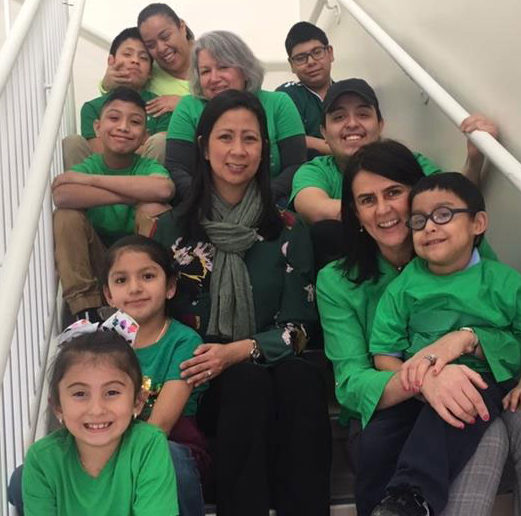
GRAND OPENING, JULY 17!
With the generous support of The Coleman Foundation and the community, the Center is thrilled to announce the opening of our new site located at 2701 W. 36th Pl., Chicago.
The space will include a large classroom and conference room for therapy programs, job training, parent education and community gatherings. Stay tuned for our grand opening in June!
Our heartfelt thanks to the talented staff of Studio 222 Architects, RTM Engineering, Bristol Design Group and John Lyle & Associates for donating so much of their time and expertise in making our new space a reality.
10 Principles of Neuroplasticity: Part 3
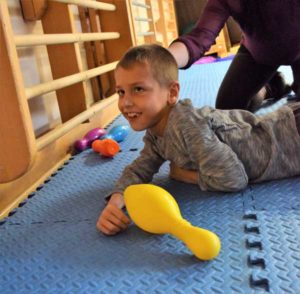 Keep reading for part three, the final installment of the neuroplasticity series. Check out parts one and two if you haven’t read them yet! As a reminder, everything I write about here is found in the article, “Principles of Experience-Dependent Neural Plasticity: Implications for Rehabilitation After Brain Damage.”1
Keep reading for part three, the final installment of the neuroplasticity series. Check out parts one and two if you haven’t read them yet! As a reminder, everything I write about here is found in the article, “Principles of Experience-Dependent Neural Plasticity: Implications for Rehabilitation After Brain Damage.”1
6. Time matters
Different forms of change (plasticity) in the brain happen at different times during training.
The authors highlight how rehabilitation has different levels of efficacy at different points following a brain injury. Specifically, they discussed a study that found that rehabilitation provided 30 days after adults had strokes was far less effective, both functionally and neurologically than rehabilitation provided 5 days after the injury.
So what does this mean for children with CP? First of all, it means that therapy should be started as SOON as possible for babies with a suspected brain injury. Your child should be getting physical and occupational therapy while they are still in the NICU, and this should be continued when they are discharged home. Note that I say “suspected” injury intentionally: sometimes, it takes a while for a baby to be diagnosed with a neuromuscular disorder. This does not mean that the child doesn’t need therapy until they are diagnosed! The sooner therapy is started, the better their outcomes will be.
Secondly, puberty is also an important time to capitalize on neuroplasticity. Check out my previous article on CFI’s blog to read more about critical times for children with CP.
7. Salience matters
The training experience must be meaningful to the person in order to cause change (plasticity).
In every human brain, there’s a mechanism for remembering important things and forgetting less important things. Your brain isn’t able to contain photographic memories of every single experience you have in life, so it filters out which memories are more important to retain, and which ones you can live without.
This concept is true in rehabilitation as well: the experience needs to be meaningful to the child for neuroplasticity to be maximized. Kids need to have sufficient motivation and attention to the task at hand, and higher emotions and excitement help solidify motor learning. This is where conductive education truly excels because of the social context of therapy.
A great example is a popular activity sometimes used in class here called Body Bowling, which is the brainchild of our OT Josephine Boggs. In this activity, rolling is the main motor skill practiced, as kids compete to roll to knock over their bowling pins the fastest. This is a great therapeutic activity because it works on strengthening abdominal muscles, coordinating body parts to complete the movement, stretching shoulders, and so on. Kids don’t care about that, though. They care about winning the competition! It is amazing how much faster they roll during Body Bowling rather than alone as a warm-up activity. Making the activity fun and meaningful, or salient, to the child, not only increases their participation and enjoyment of the activity, but it makes stronger changes in the brain, too.
8. Age matters
Training-induced change (plasticity) occurs more readily in younger brains.
You may remember from part one of this series that I highlighted some good news about neuroplasticity: brains can change at any age! Well, here’s the bad news. While it’s absolutely true that brains at any age can undergo neuroplastic changes, it’s also true that changes are more robust at younger ages. This just serves to underscore the importance of beginning therapy as young as possible, and continuing throughout childhood and adolescence.
9. Transference
Change in function as a result of one training experience can even lead to learning other similar skills.
Researchers have found in a study of neuroplasticity, that after a group of people underwent training for a skill that involved the use of just one finger, neural pathways for use of the whole hand were strengthened. This finding indicates that it’s possible for one kind of training experience to enhance neural connections for other motor skills or body parts.
10. Interference
Brain changes (plasticity) that result in bad habits can interfere with learning good habits.
Neuroplasticity is usually used as a positive term, but not all neuroplastic changes are desirable. The authors of the article describe it well: “brain damage survivors may develop compensatory strategies that are easier to perform (“bad habits”) than more difficult but ultimately more effective strategies acquired through rehabilitation.” Learning those bad habits can make it harder for your brain to learn the “good habits” or better, more efficient, or safer movement patterns. The specifics of what are “good” or “bad” habits for kids with CP is highly specific and individualized to each child, so this is a good thing to ask your child’s therapist or CE teacher about.
As I did in part two, I want to pause for a moment to highlight what all of this has to do with conductive education. The truth is, any kind of experience or therapy will yield some sort of change in the brain, so for any therapist, doctor or clinic to claim to have a monopoly on neuroplasticity is just not true. However, based on the principles we just learned about, there are things you can do to really maximize on neuroplasticity to make those changes bigger and more meaningful. While conductive education indeed does address all ten principles, where I believe conductive education really stands out is with principles four, five and seven (repetition matters, intensity matters, and salience matters). You will be hard-pressed to find a commercially available therapy that provides greater repetition or intensity on a long-term basis than what is provided at the Center for Independence. In addition, the social context provides a rich environment ripe with opportunities to make movement meaningful to children, which provides the much-needed salience that was discussed above.
Congratulations on making it through the ten principles of neuroplasticity! I hope this leaves you with a better understanding of what neuroplasticity even is, and some of the most important factors in how to maximize neuroplasticity. Please leave any comments or questions on our Facebook page!
- Kleim, JA, Jones, TA. (2008). Principles of experience-dependent neural plasticity: Implications for rehabilitation after brain damage. Journal of Speech, Language, and Hearing Research, 51, S225-S239.
10 Principles of Neuroplasticity: Part 2
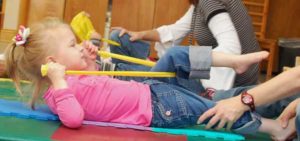 Let’s dive right into the first five principles of neuroplasticity. Everything I write about here is found in the article, “Principles of Experience-Dependent Neural Plasticity: Implications for Rehabilitation After Brain Damage.”1
Let’s dive right into the first five principles of neuroplasticity. Everything I write about here is found in the article, “Principles of Experience-Dependent Neural Plasticity: Implications for Rehabilitation After Brain Damage.”1
1. Use it or lose it
Failure to drive specific brain functions can lead to loss of abilities.
This principle is pretty intuitive: if you don’t actively use a functional component of the brain, that part starts to lose the ability to carry out the function it is responsible for. This is true for everyone: say you take piano lessons when you are young, but you stop taking them and don’t touch a piano for 10 years. When you try to play the piano again, you may be able to remember a little bit at best; certainly, you won’t be able to play as well as you did when you were practicing regularly. You literally lost some of the brain cells, and the connections between cells, responsible for playing the piano. You didn’t use it, so you lost it.
This is even true in the context of injured brain tissue. Researchers have found that when one part of the brain is injured, other parts of the brain can take over the function of the injured part. With rehabilitation, the brain literally reorganizes itself to carry out functional tasks.
What this means for kids with CP, is that it’s important to continue actively completing motor tasks, otherwise their brain will adapt and lose the “muscle memory” of how to complete those tasks. Of course, that’s true not just from a neurologic perspective but from a muscle perspective – keeping your brain strong and your muscles strong go hand in hand here!
2. Use it and improve it
Training that drives a specific brain function can lead to improving abilities.
This principle is also easy to understand: the brain will change in response to specific training. When a certain task is learned, the part of the brain responsible for that task grows new brain cells and forms stronger connections between those brain cells. This goes along with a change in output: the person becomes better at doing that task that is trained. Taken together with the first principle of neuroplasticity, there is a strong case for kids with CP to stay active!
3. Specificity
The nature of the training experience dictates the nature of the change in the brain (plasticity).
In this third principle, we get a little more, well, specific about neuroplasticity. The authors explain how different kinds of training can affect what changes happen in the brain. They highlight two examples.
First, the authors note how the biggest changes that happen to the brain are the result of learning new skills. In animal studies, research has shown that learning new skills yields a bigger change in the brain as compared to repetition of previously acquired motor movements. Please note that this doesn’t mean that working on existing skills is not important – remember the first principle, and look ahead at the fourth too – but rather that incorporating new skills into rehab can help maximize neuroplasticity.
Second, the authors explain that there is regional specificity. This means that if you are training a skill that uses a specific body part, for example using only your right hand, the changes that happen to the brain will be largest in the areas of the brain responsible for that movement. Since your right and left sides of your body are controlled by the opposite side of your brain, that means working on something with your right hand is going to make the biggest changes to the left side of the brain, and vice versa.
4. Repetition matters
Change (plasticity) requires sufficient repetition.
Think back to any time you learned a new skill. It could be writing the alphabet, playing the piano, learning to drive, anything. Did you perfect that skill after practicing it just a few times? Probably not. You had to practice it many times before it felt natural and easy to you. That’s because lasting, meaningful neuroplastic changes only happen with repetition.
The same process is at play when learning motor skills. It is not enough to practice going from sit to stand just a few times and expect to have mastered the skill. In order for a child’s brain to undergo meaningful change, it is critical for the skill to be repeated many times.
5. Intensity matters
Change (plasticity) requires intensive training.
Here’s an interesting fact about neuroplasticity that you can impress your friends with. There was an animal study where researchers studied brain changes following practice of a skilled motor task. They divided the animals into two groups: one group completed the task 400 times per day, and the other group, 60 times per day. They found that the animals in the first group had a measurable increase in connections between brain cells in the part of the brain responsible for that task, whereas animals that completed the task only 60 times per day did not.
The takeaway here is that kids with CP need pretty high intensity in their motor program in order to make meaningful changes in their brain.
Phew. We made it through the first five principles of neuroplasticity!
Before we move on the next five, I’d like to pause and consider how the ideas seen so far connect with what conductive education offers. Kids who come to the Center practice a wide range of motor tasks regularly, in a highly intense fashion, with lots of repetition of many familiar tasks, while also being given opportunities to learn new skills on an individualized basis. From what you’ve just read, I hope it’s apparent that conductive education capitalizes on every single one of the first five principles.
Stay tuned for the last installment of the neuroplasticity series!
1. Kleim, JA, Jones, TA. (2008). Principles of experience-dependent neural plasticity: Implications for rehabilitation after brain damage. Journal of Speech, Language, and Hearing Research, 51, S225-S239.
Loyola Magazine Article
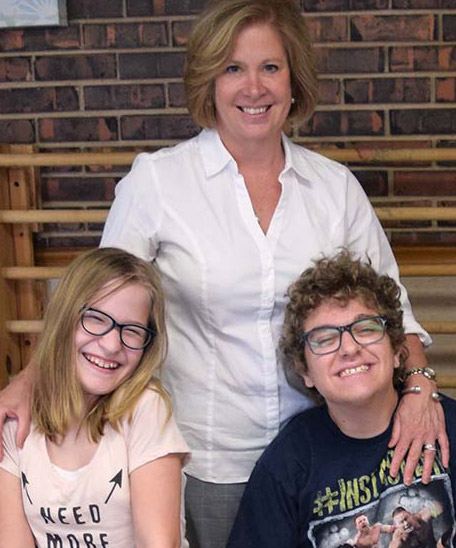 Recently the Center’s founder, Patti Herbst, was interviewed and featured in Loyola Magazine’s Alumni Voices. In the article, titled Giving kids what they need most, Patti shares her personal experience about when her son was born with cerebral palsy, and how she and her husband, Chuck, learned how to help him achieve independence. Her story tells how this discovery led her to help hundreds of other children with physical disabilities.
Recently the Center’s founder, Patti Herbst, was interviewed and featured in Loyola Magazine’s Alumni Voices. In the article, titled Giving kids what they need most, Patti shares her personal experience about when her son was born with cerebral palsy, and how she and her husband, Chuck, learned how to help him achieve independence. Her story tells how this discovery led her to help hundreds of other children with physical disabilities.
Here is an excerpt:
‘I’ve learned so much over the years through my work, and as a parent, about children with physical disabilities. Sometimes people have the misconception that these children aren’t happy, and as parents, all we want to do is make sure our children live full, happy lives. But children with cerebral palsy and other developmental disabilities are still first and foremost children—they are full of awe, wonder, joy, and laughter. And people with disabilities are just as happy as anyone else.’
Gravity and Cerebral Palsy: How it Affects your Child
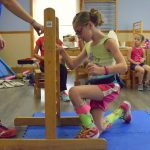
Gravity is powerful.
You might be wondering: why is gravity special to people with cerebral palsy? Gravity affects everyone, right?
It’s true that gravity affects everyone. Gravity is where our muscle strength comes from. Think about typical development: all major milestones related to movement are different versions of working against gravity. Pushing up to hands and knees. Pulling to sit. Pulling to stand. Those are all movements against gravity, right? Gravity is the force that our muscles are pushing against, which is where muscle strength comes from. Think about how weak astronauts are when they return from a long trip outside the atmosphere: it’s because their muscles have very little opportunity to fight against something.
Gravity’s Affect on Individuals with Cerebral Palsy
Gravity affects kids with cerebral palsy in several ways. First, because their muscles aren’t quite as strong and have a harder time coordinating, it’s harder to fight against gravity to complete those major milestones. As a result, kids with CP spend more time in positions that are gravity dependent. This means that unless the right positioning equipment is used, young kids with CP tend to spend more time either lying down or lying back in a reclined position. This simple factor of not being in an upright position can have lasting effects on alignment. Did you know that this affects rib cage development? When we are born, our ribs are in a horizontal position. As we move through typical milestones to be able to sit and stand, gravity pulls our ribs so they angle down. Go ahead – feel your ribs right now and you’ll feel that they are pointing down. This is the ideal position for our ribs to support our lungs as they move out and in for normal breathing. If kids with cerebral palsy aren’t given the opportunity to be in an upright position as they grow, the ribs will stay horizontal which makes breathing harder.
Another major way that gravity affects many kids with CP is later in life during walking. “Crouch gait” is a very common feature of CP, and it’s pretty much what it sounds like: the child walks with their knees bent. There are several causes for this type of walking pattern, like growth spurts and spasticity, but gravity is also a major influence. Because gravity is pulling the body down, the knees bend, and leg muscles have to be strong enough to overcome that pull. Since kids with CP tend to have weaker muscles, gravity might be so strong that the knees are not able to straighten out.
Those are just two of the biggest ways that gravity affects kids with CP, but there are so many more since every movement we do is done against gravity (unless we are swimming, or happen to be in outer space!). Even if we are just sitting, our head and torso need to work to stay upright.
So what do we do about it?
The first thing is to be sure to get the right equipment from an early age. Children who are not sitting by 6 months should get adaptive equipment to allow them to sit upright, and if they are not standing by 12 months they should get equipment that supports them in a standing position.1 Adaptive equipment will allow them to be positioned against gravity, which not only supports correct rib cage alignment, but also helps them work on trunk and neck control, and allows them some opportunity to bear weight to help keep their bones strong.
The second thing is, of course, therapy! An intense motor program like what is offered at the Center for Independence will work on strengthening muscles to be able to overcome gravity and will address their ability to do all the antigravity movements of pulling to sit, pulling to stand, walking, and so on.
Share Your Thoughts on This Topic
- Have you ever thought about how gravity affects your child’s movement and alignment?
- Does this change how you think about using equipment with your child?
- What questions do you have about this concept?
Share your thoughts on our Facebook page!
Sources: 1. Gericke, T. (2006). Postural management for children with cerebral palsy: Consensus statement. Developmental Medicine & Child Neurology, 48, 244.
